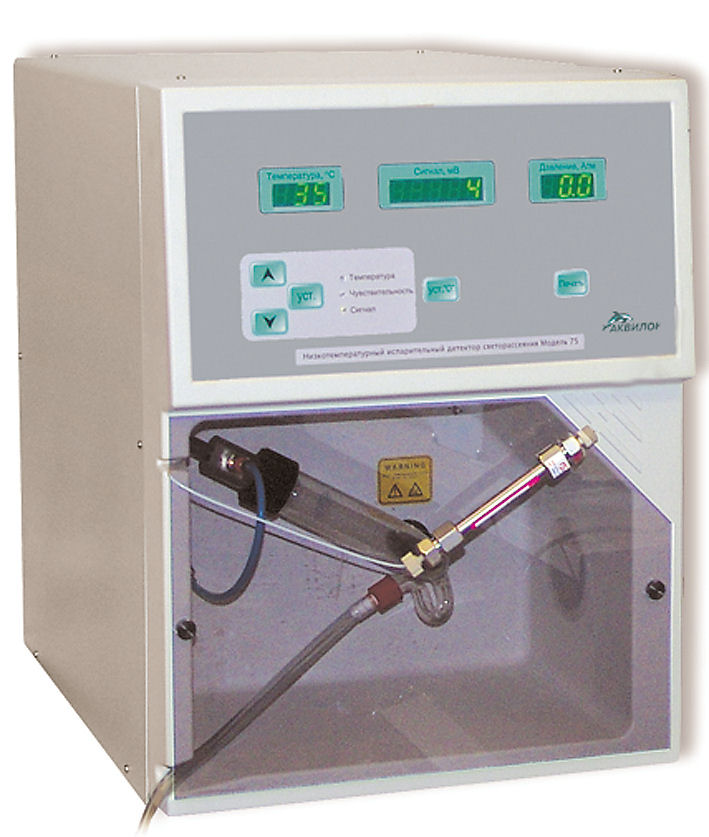The model is discontinued.
The low-temperature evaporative light scattering detector (Model 75) is a universal detection device designed to analyze non-volatile and weakly volatile organic and inorganic compounds after their chromatographic separation. The principle of operation of the detector is based on the measurement of light scattering by microparticles of the analyzed component formed as a result of spraying the eluate into a fine aerosol.
The detector response does not depend on the ability of the analyzed component to absorb or emit light and is a function of the mass of the analyzed component introduced into the detector. One of the many advantages of this detector is the ability to analyze compounds that are traditionally "inconvenient" from the chromatographer's point of view, such as fatty acids, amino acids, lipids, and polyatomic alcohols without chemical modification.
Features and Benefits
- The ability to detect almost any non-volatile or low-volatile compounds, regardless of their physical and chemical characteristics (absorption, fluorescence, electroactivity).
- A combination of the best qualities of traditional detectors - spectrophotometric (high sensitivity) and refractometric (versatility).
- Compatible with gradient elution mode.
- No need for chemical modification of the sample.
You can learn more about the advantages of light scattering detectors by clicking on this link.
| Light source | halogen lamp |
| Set temperature range of the evaporator tube | room ÷ 80°C |
| Recommended gases | air, nitrogen |
| Zero Signal Drift | 8 mV/h |
| Zero signal fluctuation noise level | 4 mV |
| Limit of detection (glucose) | < 2x10-8 g |
| Fluid and aerosol path material | PTFE, stainless steel, glass, nickel |
| Power supply, voltage/frequency | 220V / 50Hz |
| Power consumption, no more | 200 VA |
| Overall dimensions (height, width, depth) | 504x360x500 mm |
| Mass | 20 kg |

